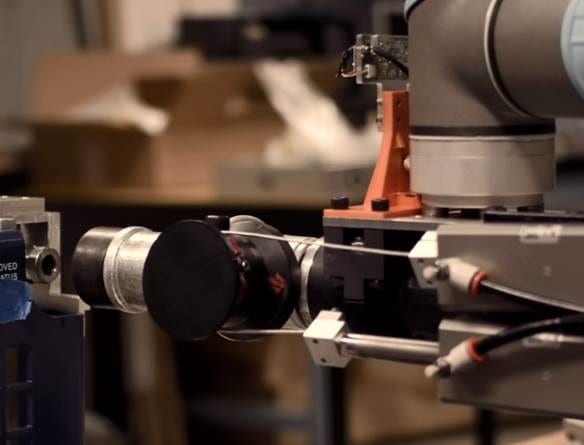The supply chain is increasingly becoming a critical function of future success of retailers, as IDC Analyst Simon Ellis pointed out in his recent Material Handling & Logistics article, Top 10 Predictions for Worldwide Chains in 2019. And manufacturers that not only recognize, but are also quick to adopt these innovative technologies will be best positioned for a successful 2019 and beyond. Of Ellis’ ten predictions, there are couple through which Plug Power is already driving innovation to help those businesses lead the charge in the coming years.
MH&L Prediction: By 2020, 65% of e-commerce operations will make use of autonomous mobile robots within their order fulfillment processes, thus helping increase productivity by over 100%.
We’ve always been proud of Plug Power’s ability to help our customers drive efficiency, empowering each business with cutting-edge technology that provides both time and cost savings through clean energy. One great example is Plug Power’s fuel cell products, which power Automated Guided Vehicles (AGV) – the industrial equivalent of driverless electric vehicles – by customers lie Bridgestone, BMW, and Mercedes. The hydrogen fuel cell-powered AGVs can operate for about 12 hours before running low on battery, and can tow a load up to 15,000 pounds at a speed of 4MPH, showing a consistent decrease in asset downtime of 20%.
We see the power of robotics continuing to develop in ways that will automate some of the necessary, but mundane processes and free up time for the people, who can instead focus their attention on more value-add work – “solving business problems or seizing on opportunities” as Ellis puts it. This is why in 2018, we teamed up with Rensselaer Polytechnic Institute (RPI) Center for Automation Technologies & Systems (CATS) and the US Department of Energy’s (DOE) National Renewable Energy Laboratory (NREL). Together, we’re building a robotic hydrogen fueling station, now in proof of concept, that will increase the ease and efficiency of fueling hydrogen-powered vehicles, where every second amounts to more than $1,000 in annual cost impact. Leveraging computer vision, sensors, robotics manipulation of the fueling nozzle, and remote controlling mechanisms, these robotic fueling stations will help companies of all sizes save valuable time and money, improving the bottom line. With the help of collaborative robots, businesses can also expect to see increased employee satisfaction, productivity and a reduction in repetitive motion injuries as explained in the MHI article, Productivity Increases When Robots Work Alongside People.
MH&L Prediction: By 2022, over 40% of manufacturers worldwide will be integrating data from product lifecycle apps into their supply chain data to improve overall after-sales service levels, achieving increases of 60%.
Data is the key to the future, unlocking many doors by providing valuable insight that can only be obtained by looking at past performance and leveraging that insight to make educated decisions for the future. Understanding the value of data and its potential to improve performance, Plug Power first launched its proprietary suite of IOT tools, SiteView, in 2016. We’ve since continued to build out this technology, which now provides game-changing diagnostics, fueling data, and operational and performance metrics. This level of detail and insight enable us to be proactive on future maintenance needs for fuel cell-powered forklift fleets, ensuring a minimum of 97% uptime at each customer location.
With our continued dedication and development to Plug Power’s HFC technology, “we’re using the Internet of Things and Artificial Intelligence to improve quality and performance. By vertically integrating key technologies into our products, we able to both grow and reduce costs,” said Andy Marsh, CEO of Plug Power.
#InfiniteDrive
